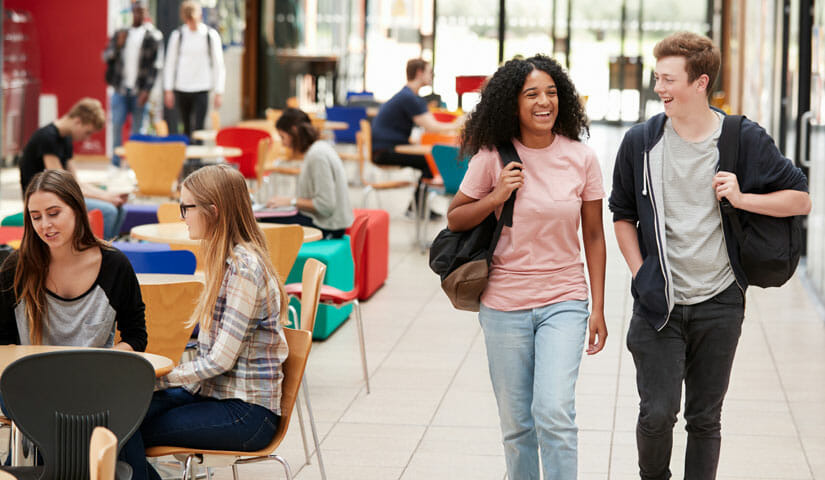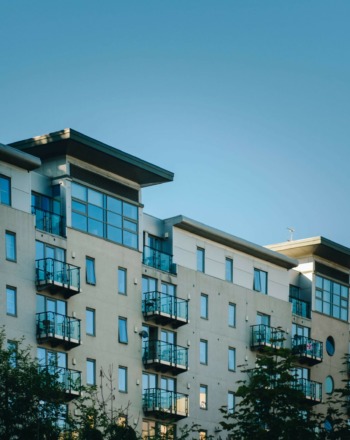Sean Lowry, Group Chief Technology Officer at Glide, explores the widening digital divide in the UK and how the end of lockdown will see increased social mobility, especially amongst young people who are applying for universities. Published at Open Access Government.
There’s no doubt that the digital divide is widening. As a result of the pandemic, it has become clear that too many young people do not have sufficient internet access – a point highlighted by the inventor of the web, Sir Tim Berners Lee. He noted that one-third of young people do not have any internet access at all, and many more lack the quality of connection needed to work or learn from home. Fast forward to one year on and, 1.5 million homes in the UK still do not have internet access. Issues of the digital divide are still very much a problem and are having a detrimental effect on younger generations.
Where COVID-19 has accelerated many forms of digital transformation, it has also brought much-needed attention to the digital divide between the haves and have-nots. The pursuit of higher education could be the mobiliser to address the closing of the digital divide, especially amongst younger generations.
Social mobility post lockdown
It is difficult to predict the exact reaction of social mobility post-lockdown, particularly among the younger demographic having spent over a year confined to their homes. Yet, with a full UK recovery roadmap underway, social mobility is likely to surge post lockdown – especially among the younger demographic. A life without travel restrictions will no doubt attract new people to new cities. In fact, a recent UCAS report revealed that university applications rose during lockdown, with a record 40.5% of all UK 18-year-olds applying for higher education. What’s more, for the first time, over a quarter (25.4%) of young people from disadvantaged backgrounds across the UK have applied to university. Where the pandemic has highlighted a digital divide, universities can offer a solution. Perhaps this is being realised by students.
Applying for university might be the perfect catalyst – acting as an enabler for many young people to undergo this change of scenery. Social mobility isn’t going unnoticed by the government, either. A government-funded study has been commissioned to assess lockdown effects on teenagers in England. The research will establish whether pupils achieve lower grades at school and how this might affect their decision to go to university and the jobs they get. Many higher education institutions have pre-empted these impacts. With lower entry criteria and improved access to learning materials and tools, universities are actively trying to offer a leveller for those impacted by the digital divide.
However, a stream of new residents brings inevitable new pressures on both universities and cities – particularly when it comes to broadband performance. With many expected to be taking a blended approach to working and learning – fluctuating between at home and on-site – fibre broadband availability must be a priority for these areas if they want to adequately accommodate and cater towards these new demands.
A catalyst for fibre cities
Universities must be ready for increased social mobility and not be complacent in the broadband that they offer students. Not only will this help attract prospective students, but it will help to nurture the current student population that have invested in the area. Students are no longer satisfied with weak internet connection, and slow download and upload speeds. The pressure is on managed service providers to provide meaningful connectivity that creates a seamless and streamlined learning experience for students in today’s battle against digital disparity.
Gigabit infrastructure is on the rise. Internet speeds are able to scale and the opportunity for first-grade connectivity is at an all-time high. A full-fibre delivery that uses the latest network technology will deliver a reliable and future-proofed service. For purpose-built student accommodation (PBSA), gigabit broadband means greater speed and productivity. With this in place, young people are given equal levels of Wi-Fi connectivity and access to the internet.
Reliable, ultra-fast broadband aligns with the agile learning patterns of modern students. Blended learning will see students tune into their lectures from their accommodation through cloud-based workspaces and collaboration tools. These allow students to continue learning seamlessly from remote locations, but only when their broadband is up to scratch.
As younger society looks to move around and retain its reliance on technology, the onus is on fibre companies and university institutions to bring hyper-fast gigabit-capable broadband to student accommodation and facilitate high-quality education. Cities with large student populations should look to gigabit-capable broadband so that students can benefit from boosted speeds, improved connectivity and better, faster learning.
The reliance on connectivity in work, education and life is here to stay and needs to be adopted across student accommodation both on-campus and off campus to empower students with more agile learning, wherever they are.






































































































